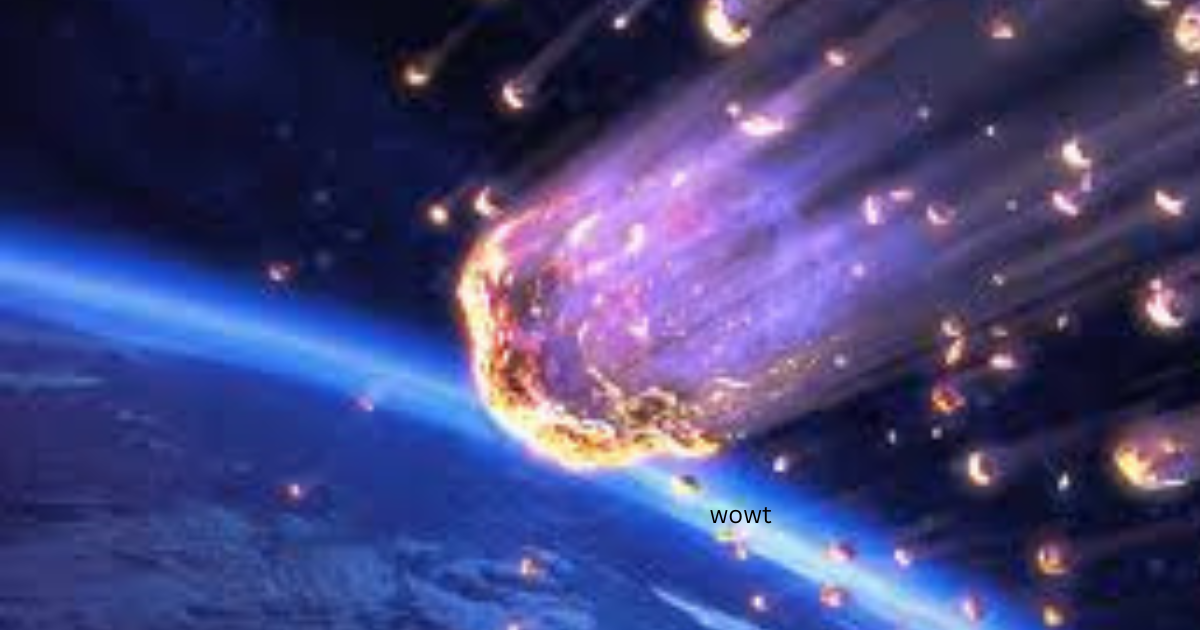A meteor, often referred to as a “shooting star,” is a beautiful natural phenomenon that occurs when a meteoroid burns up upon entering Earth’s atmosphere. These bright streaks of light captivate skywatchers and are especially awe-inspiring during meteor showers. But what exactly are meteors, how do they form, and what makes meteor showers so special? Let’s explore the science behind these dazzling celestial events.
What is a Meteoroid?
A meteoroid is a small space rock, usually originating from comets or asteroids. When these fragments, typically ranging from a grain of sand to a few meters in size, enter Earth’s atmosphere at high speeds, they transform into meteors. The high-speed entry causes friction with the atmosphere, which heats the meteoroid until it glows, creating the bright streak of light we see in the sky.
How Meteors Form
When a meteoroid penetrates Earth’s atmosphere, the intense friction generates heat. This heat causes the meteoroid to vaporize and produce a glowing trail of light. Most meteoroids burn up completely before reaching the ground, but larger ones may survive the journey and land on Earth’s surface, becoming meteorites.
Types of Meteors
Meteors come in different sizes and brightness levels. While most are faint and brief, some meteors can produce extremely bright flashes, known as fireballs or bolides, which can sometimes even be heard as they break apart.
Meteor Showers
Meteor showers occur when Earth passes through a cloud of debris left behind by a comet. As Earth moves through this trail of particles, multiple meteoroids enter the atmosphere and create a shower of meteors. Meteor showers are typically predictable and occur at the same time each year. Some well-known meteor showers include:
Perseids (mid-August): Known for being bright and numerous.
Leonids (mid-November): Famous for producing meteor storms in certain years.
Geminids (mid-December): Noted for their brilliant and multicolored meteors.
Difference Between Meteoroid, Meteor, and Meteorite
Meteoroid: A space rock or fragment in space.
Meteor: The streak of light produced when a meteoroid enters Earth’s atmosphere and burns up.
Meteorite: A piece of meteoroid that survives the atmospheric journey and lands on Earth’s surface.
The Impact of Meteorites on Earth
Though most meteoroids burn up in the atmosphere, some larger fragments can reach the ground as meteorites. When they do, they often leave craters, depending on their size and velocity. Famous meteorite impacts, like the one that caused the Barringer Crater in Arizona, provide evidence of how powerful these space rocks can be.
How to Observe a Meteor Shower
Meteor showers are best viewed away from city lights on clear, dark nights. The best time to see meteors is usually after midnight, when Earth is facing the oncoming meteoroid stream. No special equipment is needed—just your eyes and a good view of the night sky.
Conclusion
Meteors are one of nature’s most fascinating celestial displays. Whether catching a fleeting glimpse of a “shooting star” or witnessing an entire meteor shower, these brilliant streaks of light provide a mesmerizing reminder of the universe’s vastness. Watching a meteor light up the sky can be a humbling and awe-inspiring experience, connecting us with the greater cosmos beyond our planet.
FAQs
What is the difference between a meteor, meteoroid, and meteorite?
A meteoroid is a space rock traveling through space. A meteor is the light we see when the meteoroid burns up in Earth’s atmosphere. A meteorite is what remains if any part of the meteoroid survives the atmospheric entry and lands on Earth.
How fast do meteors travel?
Meteors typically travel at speeds ranging from 25,000 to 160,000 miles per hour (40,000 to 260,000 km/h).
Can meteor showers be predicted?
Yes, meteor showers are often predictable as they occur when Earth passes through the debris trails left by comets, which happens at regular intervals each year.
Are meteorites dangerous?
Most meteoroids burn up in the atmosphere, but large meteorites that reach Earth can cause damage. However, significant meteor impacts are extremely rare.
What’s the best way to view a meteor shower?
The best way to watch a meteor shower is to find a dark location, free from light pollution, lie back, and allow your eyes to adjust to the darkness. Meteor showers are best viewed after midnight on clear nights.











